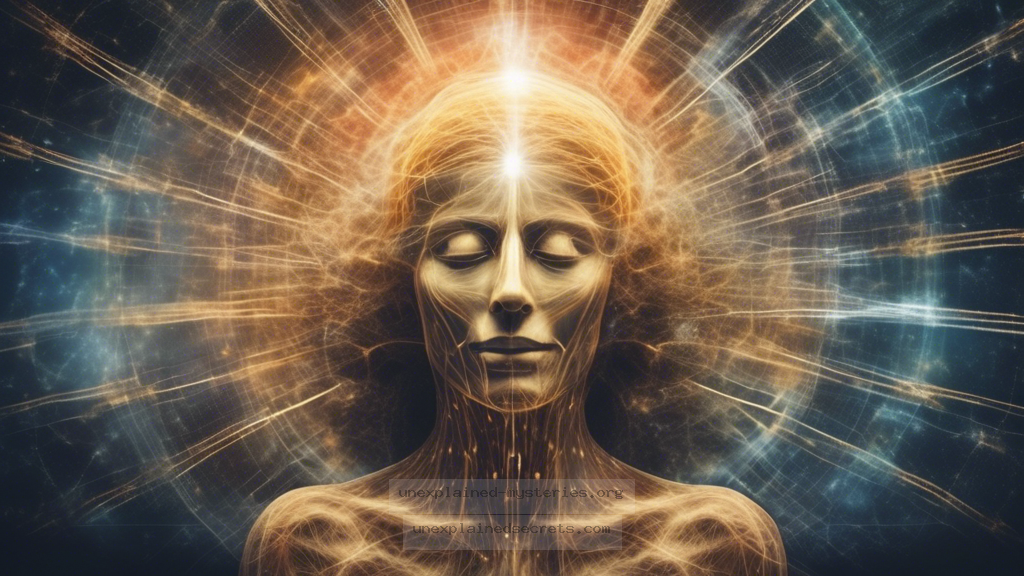What Happens to Consciousness During Near-Death Experiences, and Why Are Reports So Consistent Across Cultures?
What Happens to Consciousness During Near-Death Experiences, and Why Are Reports So Consistent Across Cultures?
The phenomenon of Near-Death Experiences (NDEs) has intrigued humanity for centuries, raising profound questions about the nature of consciousness, the possibility of an afterlife, and the intersection between science and spirituality. What happens during these experiences, and why do many individuals report remarkably similar sensations regardless of cultural background? Understanding these experiences not only sheds light on human existence but also invites deeper contemplation about life, death, and the potential continuity of consciousness beyond physical demise. This exploration is crucial in both spiritual and scientific contexts, as it deals with the essence of what it means to be alive.
Historical Context of Near-Death Experiences
Near-Death Experiences have been documented throughout history, often interpreted through the cultural and religious lenses of the time. Ancient texts, such as the “Tibetan Book of the Dead,” describe journeys of the soul through different planes of existence after death. In the 20th century, Dr. Raymond Moody popularized the term “Near-Death Experience” in his seminal book, “Life After Life,” published in 1975. His research presented a collection of case studies highlighting commonalities in NDEs, such as feelings of peace, out-of-body experiences, and encounters with light or deceased loved ones. These themes resonate globally, suggesting a universal aspect to these experiences that transcends cultural boundaries.
Core Concepts and Theories Surrounding NDEs
At the core of NDEs are several key concepts that help explain the various elements reported by individuals. The common experiences reported during NDEs can be categorized as follows:
- Out-of-body experiences (OBEs): Many individuals report a sensation of floating above their bodies, observing the medical procedures attempting to revive them.
- Feelings of peace and joy: Participants often describe a profound sense of tranquility, devoid of earthly worries.
- Encountering a light: A bright, welcoming light is frequently mentioned, which many interpret as divine or transcendent.
- Life review: Some individuals experience a rapid replay of their life events, often highlighting moments of love and kindness.
- Meeting deceased relatives: A significant number of NDEs include encounters with loved ones who have passed away.
Theories regarding why these experiences occur range from neurological explanations, such as the brain’s response to trauma or lack of oxygen, to spiritual interpretations positing that consciousness exists independently of the physical body. Neurologist Dr. Sam Parnia’s research suggests that brain activity can persist for a short time even after clinical death, allowing for the potential of conscious experiences.
Real-World Examples of Near-Death Experiences
Numerous documented cases illustrate the profound impact of NDEs on individuals. One notable example is the case of Dr. Eben Alexander, a neurosurgeon who experienced a profound NDE while in a coma due to a rare bacterial meningitis. In his book, “Proof of Heaven,” he describes a vivid journey through a beautiful, otherworldly landscape, where he encountered beings of light and felt a sense of unconditional love. His experience challenged his previous skepticism and ignited a passionate exploration of spirituality.
Another well-documented case is that of Anita Moorjani, who, while battling cancer, had an NDE that led her to a transformative understanding of love and self-acceptance. Her story, recounted in “Dying to Be Me,” highlights how the insights gained during her NDE prompted her to heal from cancer, emphasizing the potential for NDEs to catalyze profound personal change.
Practical Implications of NDE Research
The implications of NDE research extend far beyond individual experiences; they challenge our understanding of consciousness and the human experience. Patients who have undergone NDEs often report a shift in their perspectives on life, death, and what it means to live fully. This has led to increased interest in integrating NDE accounts into therapeutic practices, particularly in palliative care, where understanding patients’ fears around death can help ease their transitions.
Insight: Many individuals who have had NDEs report a decreased fear of death and an increased appreciation for life, suggesting therapeutic potential in understanding these experiences.
Alternative Perspectives on NDEs
While many view NDEs as evidence of an afterlife, skeptics argue that they can be explained through physiological and psychological phenomena. For instance, the brain’s response to trauma can lead to hallucinations, and the release of endorphins may create feelings of euphoria. Cognitive psychologists suggest that the life review aspect of NDEs can be attributed to the brain’s rapid processing of memories in response to life-threatening situations.
Additionally, cultural interpretations play a significant role in shaping NDE accounts. An individual from a Christian background may interpret their experience through a biblical lens, while someone from a Buddhist background may perceive it through a spiritual framework reflective of reincarnation. This cultural influence suggests that while the core experiences may be similar, the interpretations can vary widely.
Common Misconceptions about NDEs
Despite the wealth of information available, several misconceptions about NDEs persist. One common myth is that all NDEs are overwhelmingly positive. While many individuals report blissful experiences, some have described frightening or distressing NDEs, prompting discussions about the emotional state of the individual prior to the event and the complexities of human consciousness.
- Myth: All NDEs are beautiful and peaceful.
- Fact: Some individuals report negative experiences, which can lead to ongoing psychological challenges.
Warning: Misinterpreting the experiences of individuals with distressing NDEs can lead to further trauma and misunderstanding of the NDE phenomenon.
Investigating Near-Death Experiences: Best Practices
For those interested in studying NDEs, it is essential to approach the subject with an open mind and a balanced perspective. Here are some best practices for investigating NDEs:
- Conduct qualitative research: Gathering personal narratives can provide valuable insights into the subjective experience of NDEs.
- Incorporate interdisciplinary approaches: Collaborating with neurologists, psychologists, and spiritual leaders can enrich the understanding of NDEs.
- Engage with NDE accounts: Reading literature on NDEs, including first-person accounts and scientific analyses, can deepen understanding.
Future Developments and Ongoing Research in NDEs
The field of NDE research is continually evolving, with advancements in neuroscience and psychology paving the way for deeper exploration. Researchers are increasingly interested in understanding the physiological processes that may accompany NDEs, while also considering the broader implications for consciousness studies. Projects like the AWARE study, led by Dr. Sam Parnia, aim to investigate the experiences of cardiac arrest patients, providing critical data on consciousness during clinical death.
Moreover, as societal attitudes towards spirituality and consciousness shift, NDEs may gain greater acceptance as a legitimate area of scientific inquiry. This could lead to increased funding for research initiatives and more interdisciplinary collaborations, fostering a comprehensive understanding of this mysterious phenomenon.
Conclusion: The Unexplained Mystery of NDEs
Near-Death Experiences represent one of the most profound mysteries of human existence, encapsulating questions of consciousness, life, and the afterlife. The consistent themes across cultural contexts invite deeper inquiry into the nature of reality and the potential continuity of consciousness beyond physical death. While scientific explanations provide valuable insights, the spiritual significance of NDEs cannot be overlooked. By embracing both perspectives, we can foster a richer understanding of the human experience, ultimately leading to greater compassion and acceptance towards the mysteries of life and death.
Key Point: NDEs challenge our understanding of consciousness and invite us to explore the profound questions surrounding the human experience, bridging the gap between science and spirituality.
Other Articles
Recent Posts
- What Happened to Flight MH370? The Conspiracy Theories That Still Haunt Us
- What Secrets Lurk Within the Walls of the Infamous Trans-Allegheny Lunatic Asylum?
- What Evidence Supports the Existence of Bigfoot in the Pacific Northwest?
- What Happened to the Indus Valley Civilization? Unraveling the Mysteries of Ancient Urban Life
- Can Telepathy Be Scientifically Proven Through Laboratory Evidence?







